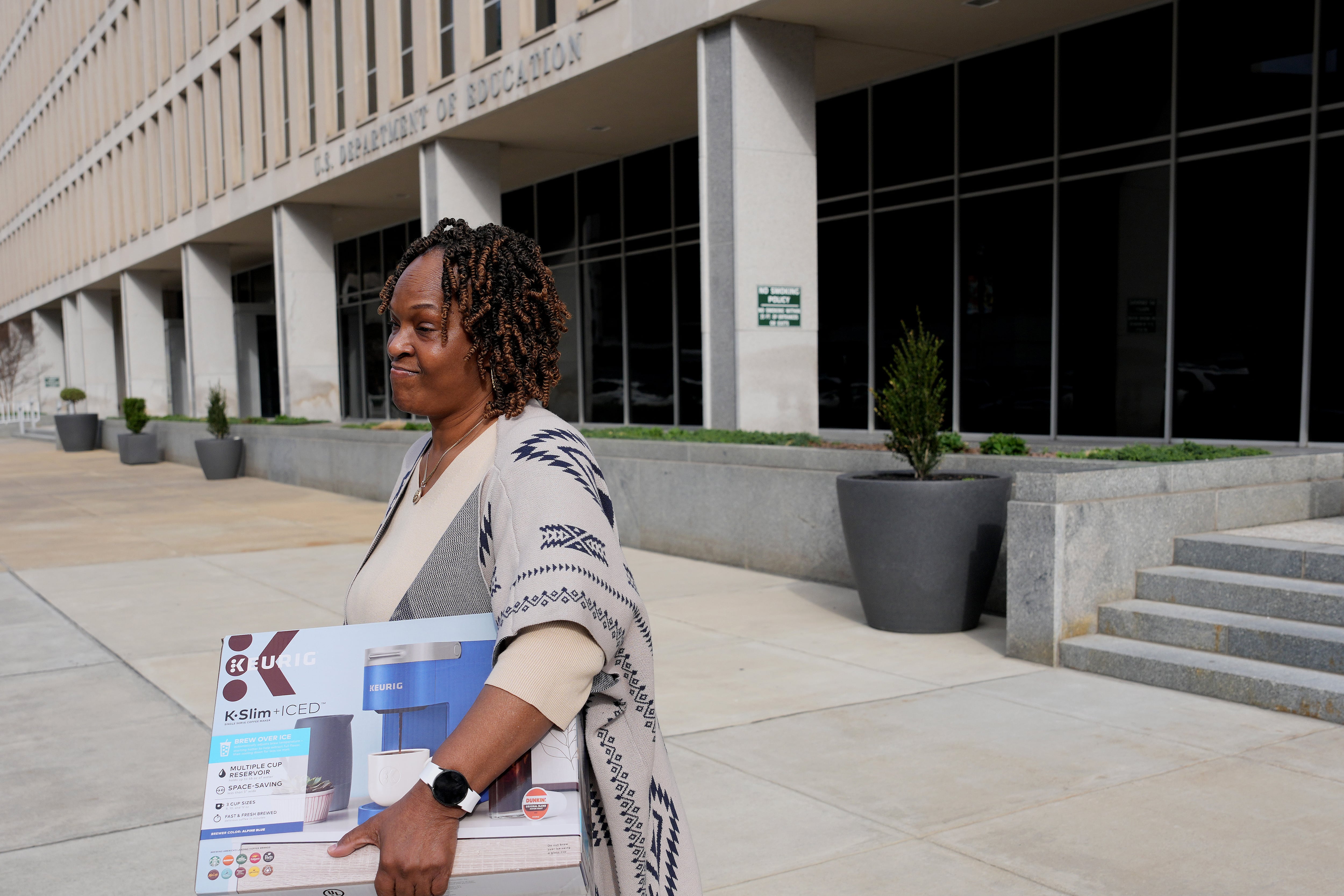Sign up for Chalkbeat’s free weekly newsletter to keep up with how education is changing across the U.S.
Massive layoffs at the U.S. Department of Education can move forward, the U.S. Supreme Court ruled, while a lawsuit challenging those layoffs plays out in the lower courts.
The 6-3 decision Monday overturns a U.S. District Court judge’s order that Education Department employees be brought back to work. A coalition of states, school districts, teachers unions, and education advocacy groups had argued that the layoffs were so extensive they prevented the Education Department from doing its job under the law.
The majority did not issue an opinion explaining their decision. Allowing the layoffs to move forward for now is consistent with other recent Supreme Court decisions allowing the Trump administration to remove federal employees.
The decision is a major blow to education leaders and advocates fighting to preserve a fully functioning federal department. In addition to allowing layoffs to proceed, the decision means the Education Department can resume efforts to move certain functions to different departments.
Education Secretary Linda McMahon previously described the layoffs as a first step toward President Donald Trump’s goal of eliminating the Department of Education, although only Congress can officially shut down the department.
“Today, the Supreme Court again confirmed the obvious: the President of the United States, as the head of the Executive Branch, has the ultimate authority to make decisions about staffing levels, administrative organization, and day-to-day operations of federal agencies,” McMahon said in a press release. “While today’s ruling is a significant win for students and families, it is a shame that the highest court in the land had to step in to allow President Trump to advance the reforms Americans elected him to deliver using the authorities granted to him by the U.S. Constitution.”
Justice Sonia Sotomayor called the decision “indefensible” in a dissent joined by her two liberal colleagues, Justices Elena Kagan and Ketanji Brown Jackson.
“When the Executive publicly announces its intent to break the law, and then executes on that promise, it is the Judiciary’s duty to check that lawlessness, not expedite it,” Sotomayor wrote.
McMahon laid off roughly 1,300 department employees in March, a week after she was confirmed by the Senate. Coupled with early retirements and buyouts, the move halved the size of the department. A few days later, Trump signed an executive order directing McMahon to do everything in her legal authority to shut down the department.
The Office for Civil Rights, Federal Student Aid, and the Institute of Education Sciences were particularly hard hit. Former department employees have expressed alarm at how many civil rights cases are being dismissed without investigation, while advocates say many cases appear stalled. Colleges, meanwhile, have reported problems with long call wait times and broader disruptions to financial aid, and the future of federal data collection is unclear.
Despite the previous court order, laid-off employees had remained on administrative leave. In a series of court filings, Education Department leaders said they were working through logistics about parking and desk space.
A separate injunction in a different lawsuit ordered the restoration of jobs in the civil rights division. That order remains in place for now, but the administration is expected to appeal based on today’s ruling.
McMahon said Monday the Education Department “will now deliver on its mandate to restore excellence in American education.” She said the department continues to fulfill its obligations under the law while reducing bureaucracy.
Sheria Smith, president of the American Federation of Government Employees Local 252, which represents Education Department employees, called the ruling a “disservice to the American people.” She said McMahon and the Trump administration have a choice in what happens next.
“The agency doesn’t have to move forward with this callous act of eliminating services and terminating dedicated workers,” she said in a statement. “We call on the agency to restore our positions and let us return to work, stand up for students, and ensure every child has the support they need to succeed and build a strong future.”
National Parents Union President Keri Rodrigues said the Education Department does important work, including protecting the rights of students with disabilities and making sure federal funds are properly spent. The Supreme Court is allowing the Trump administration to sidestep Congress as it moves toward getting rid of the department, she said in a statement.
“This is not just a policy disagreement,” she said. “It is a constitutional crisis.”
Conservatives had mixed reactions to the decision and what it means next for American schools.
“Challenge: The 1.4K Department of Education bureaucrats who just got canned should get a job actually teaching in a school,” Daniel Buck, director of the Conservative Education Reform Network, posted on the social media site X.
American Enterprise Institute senior fellow Robert Pondiscio seemed to downplay the impact.
“Well, good,” he wrote on X. “But there is no ‘get education back to the states.’ The states have always been in control of it.”
This story has been updated with additional reaction.
Erica Meltzer is Chalkbeat’s national editor based in Colorado. Contact Erica at emeltzer@chalkbeat.org.






